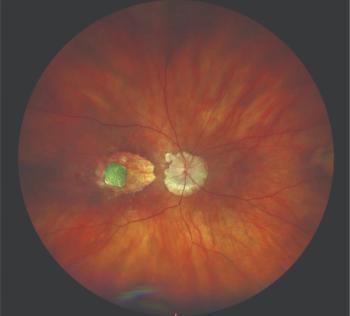
How I manage encounters with angry patients
Fortunately, in most medical practices, angry patients are the exception, not the norm.
The natural history of anger entails five stages: predisposition, irritation, escalation, outburst, and consequence. Understanding this process allows us to neutralize anger effectively with minimal disruption.
Patients become angry for a multitude of reasons: rude receptionists, long waiting times, hunger/thirst, unmet expectations, or a combination of factors. Regardless of the reason for the anger, when I enter the examination room with a well-practiced smile, the surprise of finding a cold shoulder and simmering stares can be quite unsettling.
1 Allow. After the initial introduction, allow the patient to vent without interruption. The patient chooses hostile, accusatory words for maximal effects, some bordering on theatrical with colorful, dramatic flares. The patient seeks to vilify the establishment and claim victimhood, and I aim to facilitate the emotional decompression in the most expeditious manner. In your mind, categorize the complaints broadly to help you address them later. This detached, intellectual exercise isolates your professional judgment from the emotional ripples.
If the patient simply is irritated, decompression by uninterrupted venting can quickly dampen the harsh tone of the encounter and sometimes can prevent an escalation and outburst. On the other hand, if an outburst is imminent, allowing it occur without intrusion can limit its scope and damage. In the rare instances when the outburst shows no sign of resolution and is accompanied by disruptive or threatening behaviors, terminate the encounter.
2 Absorb. After the patient's outpouring, absorb the experience with a moment of silence. This maneuver is the most important one during an angry encounter, and it also is the simplest.
During this inflamed stage, any words from you will sound either antagonistic or defensive to the patient. Therefore, resist the urge to reply.
While maintaining eye contact with the patient, let the imaginary echoes linger, and allow the air to stiffen. Deflect any follow-up probing by stating, "I am trying to absorb everything you have just said."
Soon, the atmosphere will thicken to an icy near-awkwardness. Without rebuttal from you, the patient is deprived of ammunition to engage and escalate his or her behavior, and a confrontation is thwarted. This moment of contemplation not only allows you to settle mentally; it also allows the patient moments of introspection, which may catalyze the early consequences of remorse. By not speaking, you gain moral high ground.
3 Assess. Gently remind the patient of the goal of the visit and assess the clinical problems with a physical exam.
Meditatively, as an ophthalmologist, I allow myself the luxury of inefficiency and indulge in the marvel of ocular structures. While I linger over the fullness of meibomian glands, the gnarly iris details, and the desperate hollowness of a glaucomatous optic disc, the atmosphere softens further.
The fractured therapeutic relationship is restored by the simple and sacred act of examination. Meanwhile, you have the opportunity to assess the emotional tone of the encounter quickly and to anticipate and process key problems so you can generate effective counterpoints.
4 Acknowledge. At the end of the examination, thoroughly discuss the clinical findings of the exam as well as relevant management options. Doing so centers the encounter on clinical care, despite the disruptive start. Then turn your attention to the patient's angry outburst. I like to summarize it in one or two salient points and address them in a succinct, effective manner.
Establish common ground by acknowledging the patient's right to be angry, but point out the outburst's undermining effect on clinical care. Offer solutions to avoid future problems while outlining the limitations of the system, and emphasize the patient's active role in a satisfying, productive clinical encounter. Doing so reassures the patient, who often will be apologetic at this point.
5 Absolve. At the end of the encounter, you will have delivered excellent care in spite of a challenging situation and will have established renewed common ground with the patient. Reflect on the episode to ensure the integrity of the therapeutic relationship.
Root-cause analyses can help you isolate the triggers of the confrontation and may be an effective means of preventing future episodes. If you identify a systemic problem, it should be addressed. A future clash can be much more challenging if a patient believes that you promised improvement but did not deliver.
Angry patients are an unavoidable reality of clinical practice. Not only is it destructive and emotionally draining to escalate the situation with confrontation, but doing so also can irreversibly damage the therapeutic relationship, leading to distrust on both sides. When we exercise restraint and allow patients to decompress, and then follow this period with a contemplative pause for reflection and introspection, most thorny scenarios can readily resolve. In this era of defensive medicine, being able to neutralize a patient's hostile behavior during an encounter and transform the encounter into a therapeutic one is a skill essential to all successful practices.
Peter Ta Chen Chang, MD, is a glaucoma specialist practicing in Palo Alto, CA, and will commence a pediatric ophthalmology fellowship in Nashville, TN, in July. This article originally appeared in Ophthalmology Times' sister publication, Medical Economics.
Newsletter
Don’t miss out—get Ophthalmology Times updates on the latest clinical advancements and expert interviews, straight to your inbox.





